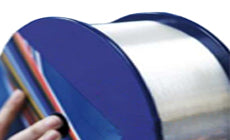
How we can help our customers do more, make more, save more and achieve more. With the Draka LongLineTM fiber, Draka is offering the benefit of its trench assisted design for ultra-long-haul applications, allowing increased distance without regeneration and easy cabling ability.
The LongLineTM fiber exhibits an extremely high effective area of 120 µm2 , 50 % higher than standard single-mode fiber. It dramatically reduces the non-linear effects offering the possibility of higher power and consequently higher distance. The very low attenuation in the C- and L- bands further enhanced the distance capacity while preserving system margins. The trench assisted design keeps macro-bending and micro-bending to a very low level making it suitable for any cable design. In addition the LongLineTM fiber has chromatic properties compatible with commercially available chromatic dispersion modules or reverse dispersion fibers, like used in submarine applications.
The fiber complies with or exceeds ITU-T Recommendation G.654 and IEC Int. Standard 60793-2-50, type B1.2, which has the zero-dispersion wavelength around 1300 nm wavelength, shows a cut-off shift at a wavelength around 1500 nm, is loss-minimized and is optimized for use in the 1530-1625 nm region.
It benefits of the Draka’s proprietary plasma process technologies (PCVD and APVDTM) and coating technologies (DLPC9). The Draka LongLineTM fiber is available at different screen test tensile stress according to application and customer request, 2 % strain equivalent notably available for submarine applications.
Features:
• Ultra large core
• Very low attenuation
• Trench assisted design
• Standard dispersion over slope ratio
• Very low PMD
Advantages:
• Limits the non-linear effects
• Permits the launch of high power increasing the path length
between repeaters
• Reduces the numbers of repeaters
• Minimizes CAPEX and OPEX
• Further enhanced distances
• Increase system margins
• Low sensitivity to macro and micro-bending losses
• Suitable for any cable design
• Allows a perfect compensation of chromatic dispersion either by
dispersion compensating module (DCM) or by reverse dispersion
fibers (RDF) as used in submarine systems
• 10, 40, 100 Gbps capability
